The Toyota Supra MK series is by far one of the most sensational and descendent names of performance in the world of automotives. From its humble origins in the late 1970s to its reincarnation for the modern era, the Supra has long been associated with the three R’s: power, style, and driver-centric performance. emblem of Japanese engineering well executed . And, now, with the new MK5, Toyota has resurrected a legend for a new generation of enthusiasts.
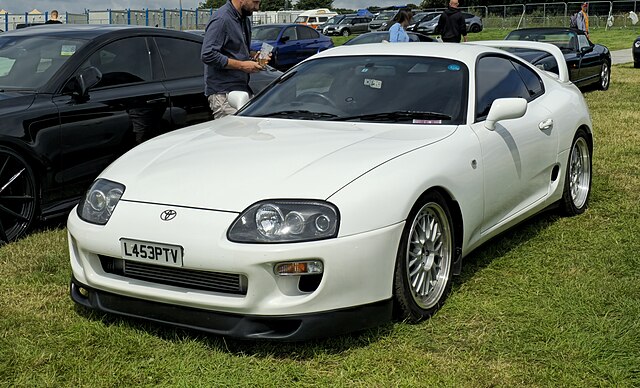
Every new generation, identified by its “MK” designation (MK1 through MK5), is part of a different chapter of a story that’s punctuated by innovation, racing history and automotive love. Be it the rough yet endearing characters of its early disorganised youth or the cult of MK4, the Supra is now as much a symbol of what Japanese engineering was always capable of getting done as…say, the Nintendo GameBoy. As the newest MK5, Toyota has resurrected the legend for those who never had a chance to experience it the first time around.
Latest MK5 — has continued to improve on a tradition of speed, style, and driving fun. What began as a sporty sidekick to the Celica soon became one of Japan’s sexiest sports cars. In the years that followed, the Supra was a fixture in motorsport, pop culture and the tuning scene – particularly when you consider the mighty 2JZ-powered MK4. After a long break, Toyota resurrected the name with the MK5 in 2019 – capturing the soul of the Supra with modern technology and performance. It’s more than just a car — it’s a symbol of passion, precision, and performance.
Generation & Specifications of Supra MK Series (MK1 to MK5)
This is the first supra look the Toyota Celica Supra (1978–1981)
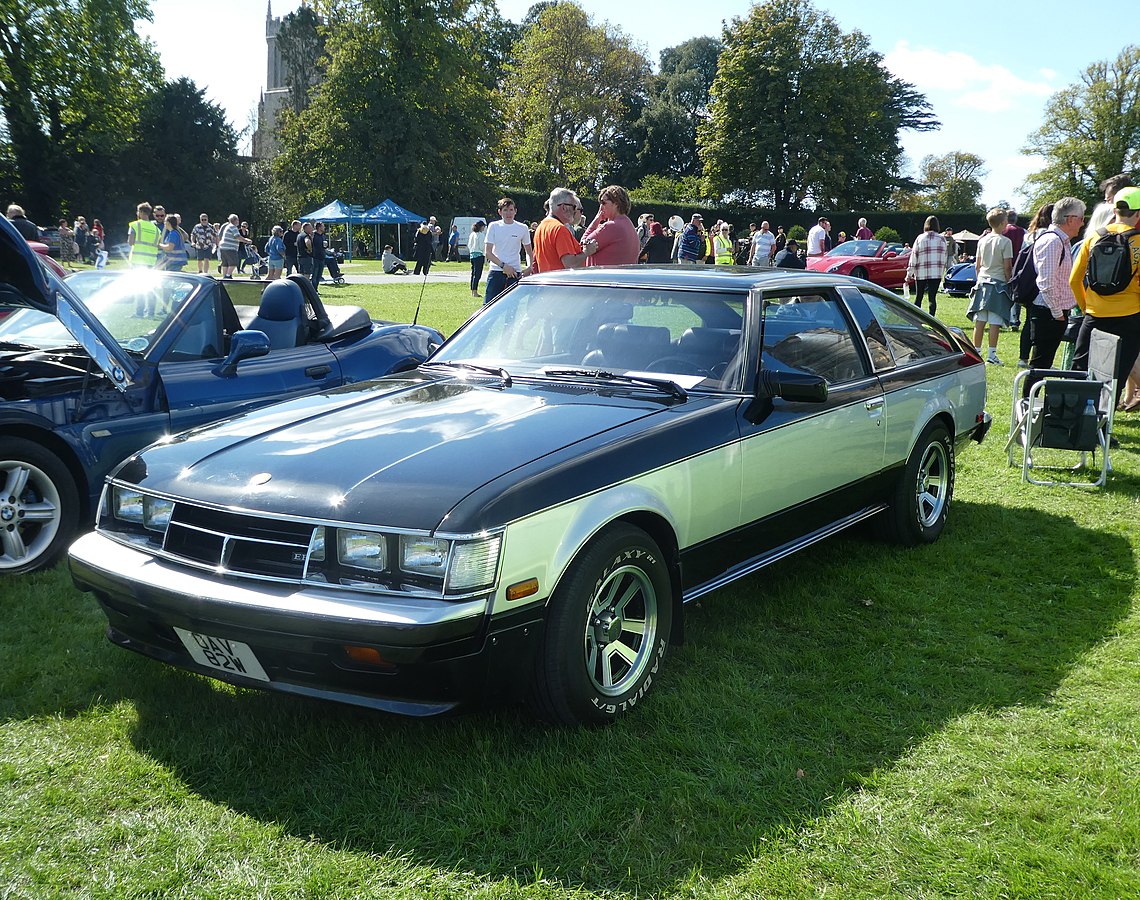
1. MK1 – Toyota Celica Supra (1978–1981)
The MK1 was Toyotas first generation of Supra, based off of the Celica liftback. It had a longer wheelbase and was powered by an inline-six. Performance and comfort were the focus when it came to it, with fuel injection and a sport-tuned suspension were included. The MK1 paved the way for the Supra’s success as a performance legend.
Engine & Performance:
- Engine: 2.6L Inline-6 (4M-E)
- Power Output: Approx. 110 hp
- 0–60 mph: Around 10 seconds
- Transmission: 5MT/4AT
- Highlights: Built on the Celica platform, it was the first Bronco with six cylinders and included premium features for its day, such as cruise control and a digital clock.
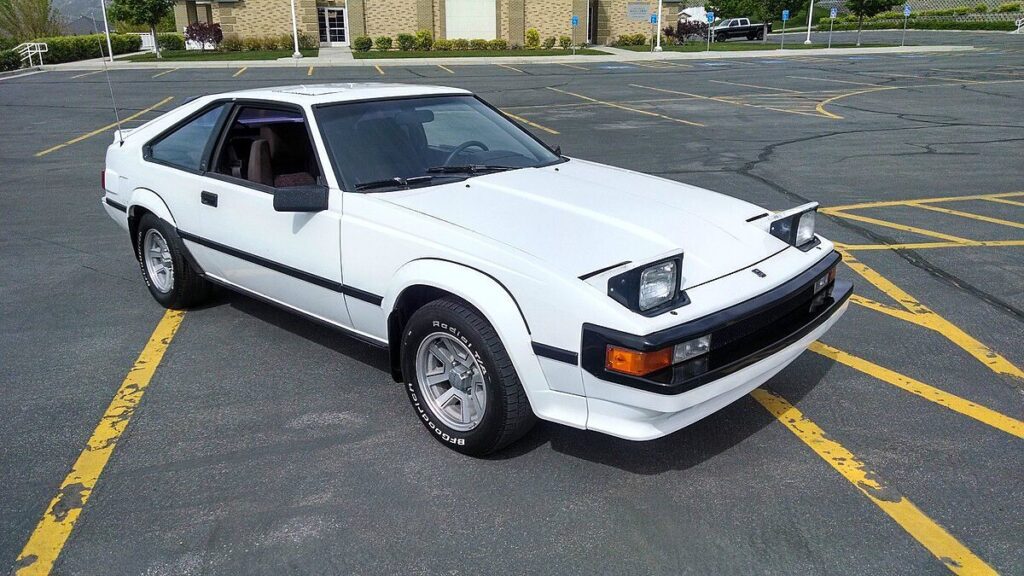
2. MK2 Toyota Supra (Toyota Celica XX) (1982–1986)
It was still based on the Celica, however, the MK2 Supra boasted a more unique, sports styled, appearance. It arrived with a more potent inline-six engine and better handling. It had pop-up headlights, and its styling was slicker and meaner looking in the modern mode. It brought sophisticated tech for its day, such as digital dashboards and electronic suspension. The MK2 established the Supra as a real sports coupe.
Engine & Performance:
- Engine: 2.8L Inline-6 (5M-GE)
- Power Output: 145–160 hp
- 0–60 mph: About 8.5 seconds
- Transmission: 5-speed manual / 4-speed automatic
- Highlights: Gained its own design with sharper lines, pop-up headlights, and improved handling with independent rear suspension.
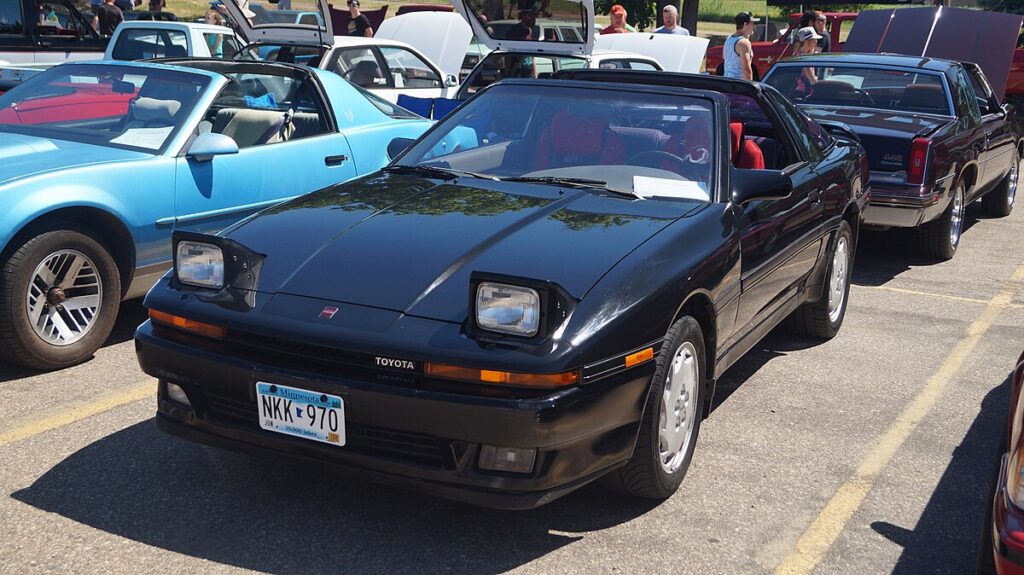
3. MK3 – Toyota Supra (1986–1993)
The MK3 Toyota Supra marked a big step th
ey made a standalone model, no longer tied to the Celica. It featured a more modern design and came with a 3.0L inline-6 engine. The introduction of a turbocharged version, which seriously boosted performance. The interior was more comfortable for dr
iver so that driver drive’s
peacefully, giving it a true grand tourer feel.
Engine & Performance:
- Engine Options:
- Naturally aspirated 3.0L Inline-6 (7M-GE)
- Turbocharged 3.0L Inline-6 (7M-GTE)
- Power Output: 200–232 hp
- 0–60 mph: Around 6.5 seconds (Turbo)
- Transmission: 5-speed manual / 4-speed automatic
- Highlights: First Supra with turbo, digital dashboard, and TEMS (adjustable suspension). More tech-focused and GT-oriented.
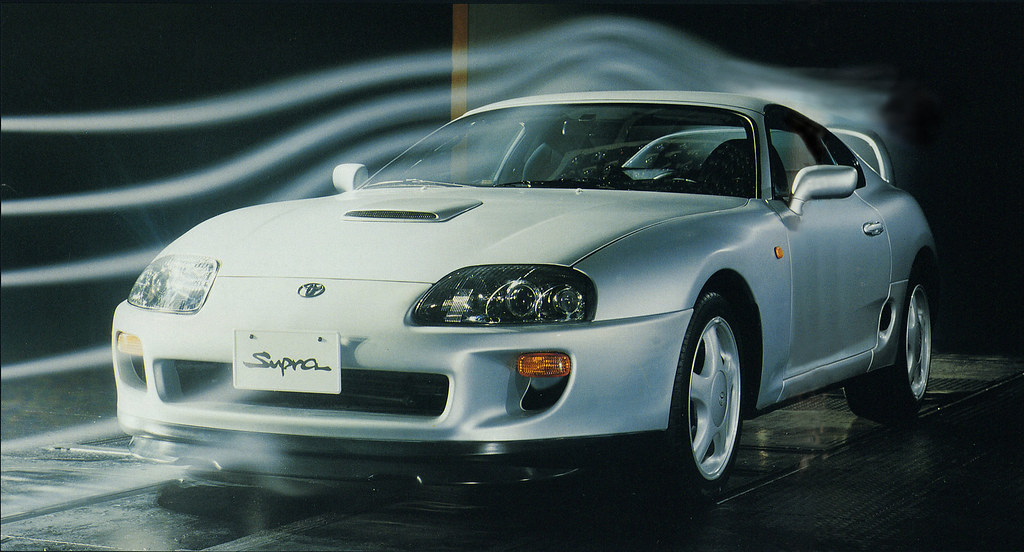
4. MK4 – Toyota Supra (1993–2002)
The MK4 Supra is where the legend really took off. Launched in 1993, it came with a sleek, aerodynamic design that still turns heads today. the twin-turbocharged 3.0L inline-6 (2JZ-GTE), it made around 276–320 horsepower (depending on the market), but with the right mods, It did 0–60 mph in about 4.6 seconds, which was supercar territory back then. Thanks to its performance, reliability, and massive presence in car culture (especially after The Fast and the Furious), the MK4 Supra is now an icon.
Engine & Performance:
- Engine: 3.0L Twin-Turbo Inline-6 (2JZ-GTE)
- Power Output: 276 hp (Japan) / 320 hp (U.S.)
- 0–60 mph: 4.6 seconds
- Transmission: 6-speed manual / 4-speed automatic
- Highlights: Legendary 2JZ engine with huge tuning potential, modern curvy design, made iconic by The Fast and the Furious.
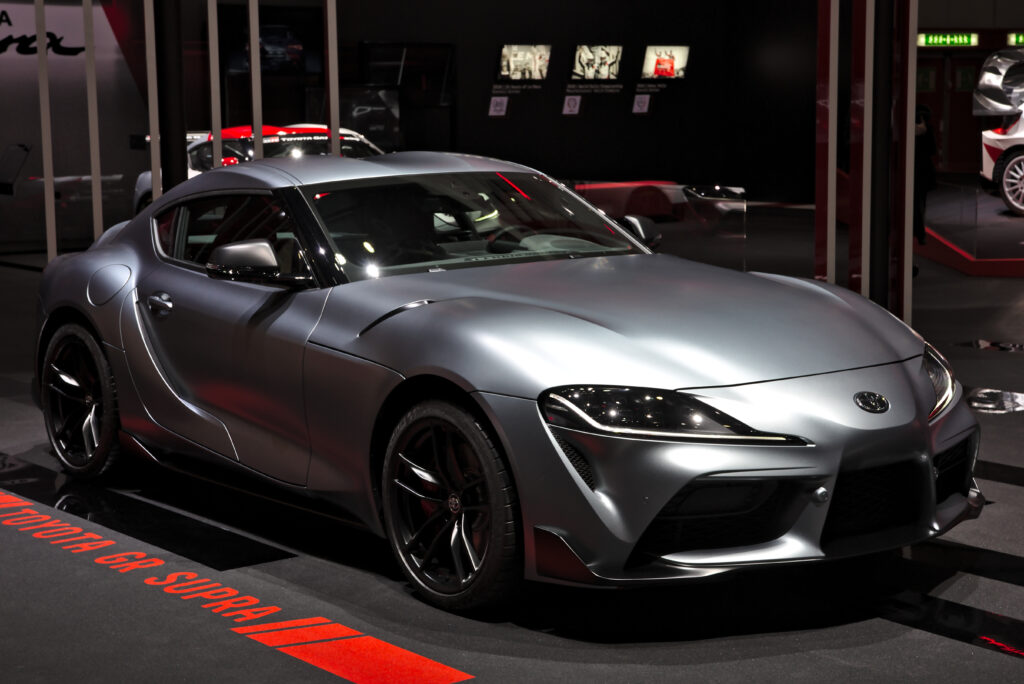
5. MK5 – Toyota GR Supra (2019–Present)
The MK5 Supra, launched was in 2019, The legendary car back after a long TIME. It was co-developed with BMW, featuring a turbocharged engine and smooth handling that make you seriously fun to drive. if you race with someone easily you debate him, the car itself delivers performance and style that live up to the Supra legacy.
Engine & Performance:
- Engine Options:
- 2.0L Turbocharged Inline-4
- 3.0L Turbocharged Inline-6 (BMW B58)
- Power Output: 255 hp (2.0L) / 382 hp (3.0L)
- 0–60 mph: As quick as 3.9 seconds (3.0L)
- Transmission: 8-speed automatic / 6-speed manual (introduced in 2023)
- Highlights: Joint project with BMW, sharp handling, modern tech, and revived Supra legacy for a new generation.
Pricing & Market Availability of Toyota Supra MK Generation
- First generation (MK1), was launched in 1978, it’s priced around $10,000 USD. It featured a 2.6L inline-6 engine. Today, it’s rare, priced between $8,000–$20,000 in classic car markets.
- Second generation (MK2), was introduced in 1982, this model was came with a sportier look and 2.8L engine. Prices then were $14,000–$17,000, now available between $6,000–$18,000, mainly through collectors and online forums.
- Third generation (MK3), launched in 1986, brought turbocharging and modern tech. Originally priced at $18,000–$25,000, used models now go for $10,000–$30,000, especially the turbo variants.
- Fourth generation (MK4), released in 1993, became a legend with its 2JZ engine. Was launched at $34,000–$40,000, it now sells for $70,000–$200,000+.
- Fifth generation (MK5), was launched in 2019, offers modern performance and BMW engineering. Prices range from $45,000–$60,000.
Performance and engine options in Wagon R
MK1 (1978–1981) – The Beginning
- Came with a 2.6L inline-6 engine
- Smooth and calm on roads, not built for speed
- More of a comfortable cruiser than a performance car
MK2 (1982–1986) – Sportier Evolution
- Had a 2.8L inline-6 engine
- Felt sharper and more athletic than MK1
- Handled better, more fun to drive, especially for its era
MK3 (1986–1993) – The Turbo Era Begins
- Offered 3.0L engines in both NA (7M-GE) and Turbo (7M-GTE) versions
- Turbo model delivered up to 276 hp
- First Supra to feel like a sports car
- Better suspension and more tech made it a big upgrade
MK4 (1993–2002) – The Legend
- Powered by the iconic 3.0L 2JZ engines (NA & Twin-Turbo)
- Twin-Turbo version had serious punch and tuning potential
- Easily hits 1000+ hp with mods
- Known for insane performance and bulletproof reliability
MK5 (2019–Present) – Modern Muscle
- Uses BMW engines:
- 2.0L turbo (4-cylinder) – ~255 hp
- 3.0L turbo (inline-6) – up to 382 hp
- 8-speed automatic transmission with launch control
- Fast, balanced, and packed with tech
- A refined Supra built for today’s driver
Toyota Supra MK Series – Expected Prices in India
- MK 1 to MK 3 is available in same price 15.5 to 18.7 lakh.
- MK4 priced between 70 lakh to 1 crore.
- MK5 priced between 85 lakh to 1 crore (ex – showroom)
Supra MK Series – Mileage & Performance (Generation-wise)
MK1 Supra (1978–1981)
- Engine: 2.6L
- Power Output: Around 110–120 hp
- Mileage: Roughly 8–10 km/l
- Performance Feel: Smooth cruiser, best suited for relaxed highway driving
- Fun Fact: Shared a platform with the Toyota Celica, more GT than sports
MK2 Supra (1982–1986)
- Engine: 2.8L (5M-GE)
- Power of Output: Approx 145–160 hp
- Mileage: Around 9–11 km/l
- Performance Feel: Noticeable bump in power, rear-wheel drive thrill improves
- Notable Tech: First Supra with independent rear suspension and sportier tuning
MK3 Supra (1986–1993)
- Engines:
- NA: 3.0L 7M-GE – ~200 hp
- Turbo: 3.0L 7M-GTE – up to 232 hp
- Mileage:
- NA – 9–11 km/l
- Turbo – 7–9 km/l
- Performance Feel: Turbo gave serious boost; started becoming a real sports car
- Cool Feature: First Supra with optional ABS and digital dash
MK4 Supra (1993–2002)
- Engines:
- 3.0L NA (2JZ-GE): ~220 hp
- 3.0L Twin-Turbo (2JZ-GTE): ~276 hp (stock)
- Mileage:
- NA – 8–10 km/l
- Turbo – 6–8 km/l
- Performance Feel: Explosive acceleration, iconic 2JZ tunability
- Legacy: Became a legend thanks to its tuning potential and Fast & Furious fame
MK5 Supra (2019–Present)
- Engines:
- 2.0L Turbo (4-cylinder): ~255 hp
- 3.0L Turbo (inline-6, BMW B58): Up to 382 hp
- Mileage:
- 2.0L – Around 12–14 km/l
- 3.0L – 9–11 km/l
- Performance Feel: Precision handling, launch control, modern muscle feel
- Tech Edge: Adaptive suspension, dual-mode exhaust, and BMW’s refined dynamics
Supra MK Series Maintenance Cost Summary
- MK1 Supra (1978–1981): Classic car charm with basic tech — maintenance is fairly affordable if parts are locally sourced. Around ₹15,000–₹30,000/year. lovers of vintage
- MK2 Supra (1982–1986): Still budget-friendly, but parts availability is little higher price. Approx. ₹18,000–₹32,000/year. Needs patience.
- MK3 Supra (1986–1993): Known for its powerfull turbo tech, but can be a bit needy — especially the 7M-GTE variant. Estimated ₹20,000–₹40,000/year. Maintenance can rise with mods.
- MK4 Supra (1993–2002): The legend! Very reliable engine (2JZ), but turbo versions and custom builds raise costs. Expect ₹35,000–₹60,000/year. Worth it for the performance and fan following.
- MK5 Supra (2019–Present): Modern, tech-loaded, and efficient. BMW-powered B58 engine means precise servicing. Around ₹25,000–₹50,000/year, depending on usage and service center.
Why the Supra Is So Loved:
- Iconic Design – Aggressive, timeless looks.
- Tuner’s Dream – Built for mods and upgrades.
- Racing Pedigree – Proven on track and in movies.
- Reliable Performance – Fast, durable, and balanced.
- Pop Culture Fame – A star in games and films.
- Powerful Engines – Especially the legendary 2JZ-GTE & B58.
- Strong Community – Loved by enthusiasts worldwide.
Toyota Supra MK series: Key Highlights
- MK1 (1978–1981) – Based on the Toyota Celica; inline-6 engine introduced the Supra nameplate with luxury-sport appeal.
- MK2 (1982–1986) – Independent design from Celica; improved handling, more power, and sportier styling.
- MK3 (1986–1993) – First turbocharged model with available 7M-GTE engine; introduced advanced tech like TEMS suspension.
- MK4 (1993–2002) – Legendary 2JZ-GTE engine, twin-turbo, and iconic design; popularized by movies and tuning culture.
- MK5 (2019–Present) – BMW co-developed; turbo inline-6 and modern performance tech; controversial but powerful revival.
- In short, if you’re after a sports car that blends iconic design, thrilling performance, and deep roots in automotive culture, the Toyota Supra MK series is a true standout.
- It’s like that vintage leather jacket you never want to take off—bold, timeless, and built to turn heads every time you hit the road.
Conclusion
The evolution of mileage across the Toyota Supra MK series reflects the brand’s commitment to innovation, performance, and efficiency. From the classic MK1 to the high-tech MK5, each generation has introduced smarter engineering, improved aerodynamics, and more efficient powertrains. While early models prioritized raw performance with moderate fuel economy, newer generations like the MK5 prove that it’s possible to deliver thrilling power while maintaining impressive fuel efficiency. Whether you’re a collector, enthusiast, or daily driver, the Supra continues to strike a compelling balance between speed and sustainability—making it a timeless icon in the world of sports cars.
-
Q1: What does “MK” stand for in the Toyota Supra MK series?
A: “MK” stands for “Mark,” which is a term used to denote the generation of a vehicle. In the case of the Toyota Supra, MK1 to MK5 represent the five distinct generations of the car, each with its own unique design, engine options, and performance features.
-
Q2: Which is the most powerful Supra MK generation?
A: The MK4 Supra (A80) is widely regarded as the most powerful and iconic, especially the 2JZ-GTE twin-turbo version, which delivers up to 276-326 horsepower stock and is famous for its tuning potential, with some modified versions reaching 1000+ HP.
-
Q3: What is the fuel mileage of the Supra MK5?
A: The Toyota Supra MK5 (A90) offers modern fuel efficiency with an estimated 22-30 MPG, depending on whether you choose the 2.0L turbocharged inline-4 or the 3.0L inline-6 turbo engine. It balances performance with eco-friendliness better than previous models.
-
Q4: Which Supra is best for daily driving?
A: The MK5 Supra is the best choice for daily driving due to its modern comfort features, better fuel efficiency, and advanced safety technology. However, some enthusiasts also consider the MK3 or MK4 as great daily drivers with a bit of old-school charm.
-
Q5: What makes the MK4 Supra so special?
A: The MK4 Supra (1993-2002) gained legendary status thanks to its 2JZ-GTE engine, bulletproof reliability, tuning potential, and appearances in pop culture like The Fast and the Furious. It’s a favorite among car collectors and performance enthusiasts worldwide.